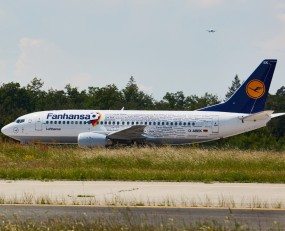
The overcapacity in the air freight market is inflicting real pain on some airlines’ cargo operations, including previous market leaders such as Lufthansa. The German airline has just announced a substantial shrinkage in its workforce.
Results for the first quarter of this year saw a decline in revenue of 21.8% as compared to the same period in 2015 and the company stated that it was “bracing itself for a challenging financial year”. Yet even before this the profitability of the cargo subsidiary was under pressure. 2015 saw profits fall by 40% to €74m, a result depressed by strikes in the wider Lufthansa Group.
The first response to this has been the announcement of 700-800 jobs losses, representing approximately 20% of its workforce. Presumably this is simply to reduce the cost base of Lufthansa Cargo along the lines of the cost-reduction programme announced earlier in the year that aims to strip-out €80m annually over the next several years. Most of these appear to be in Germany where Lufthansa has traditionally had some of its most expensive staff, although previous attempts to tackle high pay have led to severe strikes, notably amongst its pilots.
The company has been briefing that it is aiming to reposition its business to be more responsive to customers, more orientated to e-commerce and- as reported by Lloyds Loading List- to target “private customers”.
The underlying problem is that the cargo market is over supplied and growing too slowly. However, Lufthansa Cargo is also suffering from the competitiveness of the Gulf airlines, notably Emirates Sky Cargo, which may also be experiencing lower profits but which continues to invest heavily in new infrastructure and aircraft.
Fortunately for the Lufthansa Group, the passenger business has rebounded leading to a doubling of profits, so what may be happening over the medium-term is a restructuring of Lufthansa away from its traditionally large cargo business and towards greater reliance on passengers, which is the sort of business model seen at IAG/British Airways.
Source: Transport Intelligence, June 15, 2016
Author: Thomas Cullen